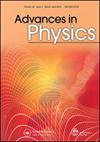A dynamical systems approach to mixing and segregation of granular materials in tumblers
IF 35
1区 物理与天体物理
Q1 PHYSICS, CONDENSED MATTER
引用次数: 140
Abstract
The physics of granular matter is one of the big questions in science. Granular matter serves as a prototype of collective systems far from equilibrium and fundamental questions remain. At the same time, an understanding of granular matter has tremendous practical importance. Among practical problems, granular mixing and its interplay with segregation is arguably at the top of the list in terms of impact. Granular mixing in three-dimensional systems is complicated, as flow induces segregation by particle size or density. Several approaches and points of view for analysis are possible in principle, ranging from continuum to discrete. Flow and segregation in three-dimensional systems is seemingly complicated; however, to a reasonable approximation, all of the dynamics takes place in a thin flowing surface layer. This observation, coupled with key experimental results, leads to a simple, compact and extensible continuum-based dynamical systems framework applicable to time-periodic flow in quasi-two-dimensional tumblers and three-dimensional systems (such as spheres and cubes) rotated about one or more axes of rotation. The case of time-periodic systems, in its simplest version, can be viewed as a mapping of a domain into itself. The placement of periodic points can be investigated using symmetry concepts; the character of the periodic points and associated manifolds provides a skeleton for the flow and a template for segregation processes occurring in the flow.一个动态系统方法的混合和分离颗粒材料在玻璃杯
颗粒物质的物理学是科学中的重大问题之一。颗粒物质作为集体系统的原型,远离平衡,基本问题仍然存在。同时,对颗粒物质的理解具有巨大的实际意义。在实际问题中,颗粒混合及其与离析的相互作用可以说是影响最大的问题。三维系统中的颗粒混合是复杂的,因为流动会引起颗粒大小或密度的偏析。原则上,可以采用从连续到离散的几种分析方法和观点。三维体系中的流动和分离看似复杂;然而,一个合理的近似,所有的动力学发生在一个薄流动的表面层。这一观察结果与关键的实验结果相结合,导致了一个简单、紧凑和可扩展的基于连续体的动力系统框架,适用于围绕一个或多个旋转轴旋转的准二维玻璃杯和三维系统(如球体和立方体)中的时间周期流动。时间周期系统的情况,在其最简单的版本中,可以看作是域到自身的映射。周期点的位置可以用对称概念来研究;周期点和相关流形的特征为流提供了一个框架,并为流中发生的分离过程提供了一个模板。
本文章由计算机程序翻译,如有差异,请以英文原文为准。
求助全文
约1分钟内获得全文
求助全文
来源期刊

Advances in Physics
物理-物理:凝聚态物理
CiteScore
67.60
自引率
0.00%
发文量
1
期刊介绍:
Advances in Physics publishes authoritative critical reviews by experts on topics of interest and importance to condensed matter physicists. It is intended for motivated readers with a basic knowledge of the journal’s field and aims to draw out the salient points of a reviewed subject from the perspective of the author. The journal''s scope includes condensed matter physics and statistical mechanics: broadly defined to include the overlap with quantum information, cold atoms, soft matter physics and biophysics. Readership: Physicists, materials scientists and physical chemists in universities, industry and research institutes.
 求助内容:
求助内容: 应助结果提醒方式:
应助结果提醒方式:


